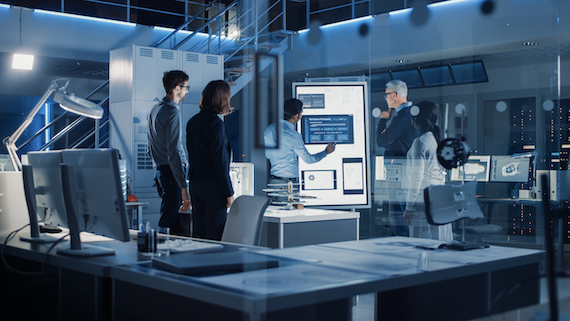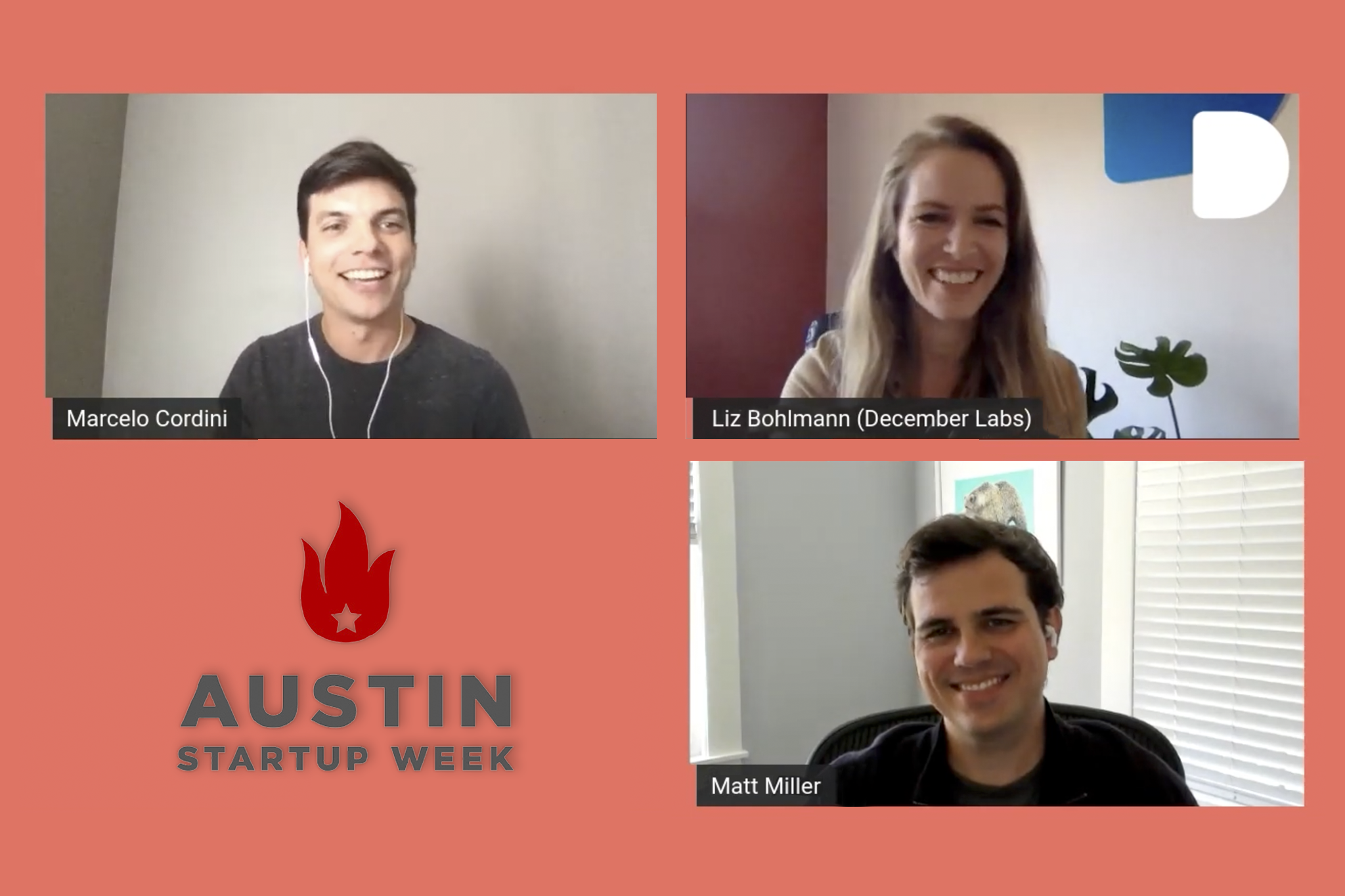The Impact of COVID-19 on Connected Devices: funding, logistics and the “new normal”
The digital event “The impact of Covid-19 on Connected Devices” featured three industry speakers who shared how their businesses’ were impacted by the pandemic

COVID-19 is not only a health pandemic; it’s become a business and economic pandemic, touching all industries, business types, and products and services. The impact has been felt in many ways by the health and fitness industry as well as those in the connected devices industry.
Health and Fitness Comes Front and Center
With everyone sheltering in place at home and gyms closed, consumers have sought other ways to focus on their fitness and stay busy. Companies like Peloton have experienced a sales and earnings spike as more people look for ways to bring the gym to them. The same goes for health-directed wearables and smart devices where more consumers want to stay on top of their personal health to minimize the risk of underlying conditions.
As early as January, we started seeing what many of our partners in this space were facing. From Day One of this pandemic, our focus has been on enabling conversations between them where we could all share experiences and drive opportunities. Together, we are learning to adapt to what might become the “new normal.”
Starting the Conversation
We recently held a digital-only event entitled, “The Impact of COVID-19 on Connected Devices.” Moderated by Elisabeth Bohlmann, Vice President, Client Strategy of December Labs, the interactive discussion panel featured:
- Iain Cameron McIntyre, CEO and Co-founder of Humm, which produces a clinically proven wearable patch that improves working memory by gently stimulating the brain’s attention and learning center;
- Sameer Sontakey, Founder and CEO of Biostrap, which has developed one of the most advanced wearable activity and sleep tracking platform; and
- Chris Merli, PDM and Owner of Inspire Fitness, the preeminent provider of high-quality gym equipment for home and commercial fitness brands.
Throughout the discussion, these health and fitness and connected devices industry thought leaders shared their experiences with COVID-19. Here are five lessons these three industry thought leaders have learned in this environment.
1. Device Manufacturing: Shifting Supply and Demand
Despite the demand, there has also been a significant challenge related to where smart devices and wearables have been manufactured. For those like Chris Merli who manufacture their exercise equipment in China, there were challenges they noted as early as January and February. Yet, they also had a warehouse full of inventory already ready to go with 40 different exercise products. This was due in part to pre-planning for the Chinese New Year when suppliers tend to shut down for a month at the start of each year.
However, as demand rose for those products during COVID-19, they had to start addressing how to increase inventory within a complex supply chain, especially when sub-suppliers started to shut down. Responding early on helped the company mitigate any inventory gaps so they could continue filling the accelerated demand.
Chris further noted that they immediately began shipping out products in containers to various locations to fill the demand. Also, they cultivated relationships with certain suppliers that were ready and willing to continue supplying what they needed as inventory began to diminish. Prior to COVID-19, suppliers weren’t open to receiving shipments directly from China. They first had to go through Inspire’s Los Angeles warehouse and then be re-shipped to their endpoint. With COVID-19, Inspire was able to execute agreements to streamline delivery with direct shipments from China to the suppliers, resulting in a jumpstart on delivery time.
Sameer shared a similar situation. Although the company’s main manufacturers are located in California, they still source materials and components from China. Their challenge was how to address COVID-19 in the midst of building a new generation product. While 80 percent complete, Sameer’s team got hit with a complete standstill rather than being on schedule to launch in March. Now, they look to June to launch due to materials and manufacturing partners that had to shut down.
2. Time to Study and Learn
Then, there was Iain’s company that has yet to publicly launch and only focused on research and development of its wearable patch prototype. The company had fortunately already received significant funding prior to COVID-19, which has enabled the startup to continue testing and developing its product.
Iain believes COVID-19 is a good and bad thing. It’s given them time to continue working on their product before launching. They have been able to further study their target audience, including needs and spending habits as well as refine their technology and product. “One thing that we’re doing more of is trying to spend more time with our customers because they have more time.”
In this way, the overall shutdown has given them the opportunity to imagine more for their product and audience. “For us, our product is really useful during this time period. People have the time and want to learn things. And, since it’s such a new, weird product, people may not see themselves wearing this out in public yet. A lot of people want to use it at home to learn things like the guitar or a new language or just focus on their work. Therefore, having everyone locked up at home isn’t necessarily a bad thing because people want to have more of a reason to use that product.”
However, the pandemic has also disrupted the startup’s supply chain, including disrupting the manufacturing design concepts they were working on with Chinese companies.
3. Opportunities Emerge
For these companies, COVID-19 situation has offered unique opportunities. First, Iain’s company, the situation has become a proving ground for a deeper understanding about its customers, applications, and product capabilities. It has revealed how people adapt to new environments, including working from home for many while others, including healthcare workers, are taking on more pressure and risk in their working environment.
For these situations, Iain noted, “Our company is focused on how we might be able to help those people to continue to improve in their jobs. It reflects the idea that out of many crises can come new opportunities to provide solutions.”
Sameer feels the same in terms of identifying new value from the COVID-19 situation that they may not have previously considered. “We have more interest in health than ever. People are still gravitating toward a product that has biometric data for tracking or even preventing COVID. We’re even doing things to take advantage of the situation like launching our own COVID study where users can opt in and participate so we can work with researchers and figure out the physiological effects of COVID-19. We’re doing at least nine studies related to COVID-19 so we’re excited about this opportunity.”
Like Humm, Sameer’s team is now exploring how to add more innovations to the software that makes it less dependent on the hardware. For example, Biostrap is launching with an integration that assesses brain health through vocal biomarkers. They are also looking at an application for remote coaching through their app, including things like sleep coaching and athletic coaching.
4. A Picture of the New Normal
For these companies, the new normal may seemingly land somewhere between the environment of six months ago and what’s changed over the course of the COVID-19 situation.
Chris has viewed it as an opportunity to double-down on software, seeking the expertise of December Labs to help cultivate the most from the increased demand for in-home fitness equipment. “One of the interesting things that has happened here in the U.S. is we have a couple states opening like Georgia. We have spoken to some of our exercise equipment dealers there, and it’s hard if you don’t have any data to know how the consumer feels. But, what we are seeing from the people we know in Georgia is that health clubs have opened up, but people haven’t come back. Only about 25% of their members have returned, so I think there’s a feeling that fitness equipment for home use will continue to see a sustained increase in demand for a while.”
Likewise, Sameer adds,“We’re adding more innovations in the software that maybe are less dependent on the hardware.” In further describing this new normal, Sameer points out a shift in the type of funding available now aligned with areas related to COVID-19 and health tracking. The new normal may involve temperature checks and apps that address potential symptoms. Already, Sameer notes an increase in open grants and open solicitations for more research. Iain added that the new normal for fundraising will be an opportunity and a challenge. “Companies will need to be conscious of what they are putting on the table in relation to the funding they request. There must be a greater focus on community and credibility based on usage data.”
Although there will be a new normal in many respects, other factors tied to operations and product development remain focused on the same key metrics. For them, Iain noted that these metrics include scientific legitimacy, credibility, brand legitimacy, and credibility. Also, bringing a new product to the market must still focus on social proof, including genuine connections with people and authentic information from them about whether or not it works for them and how that works for them. At the same time, companies have to be ready to shift as people’s lives continue to change.
5. Alternative Strategic Approaches
The overall lesson here has been that companies must learn to adapt and quickly rethink their supplies strategy. This includes identifying the most impactful factors and studying the macro trends that may impact product use and demand. Iain notes, “Some of the best businesses in tech and other places were made in the deepest recessions and the most difficult times because it forces people to consider what’s actually important.”
Other lessons include continuing to use funding resources as sparingly as possible no matter what the situation while developing a team of individuals that are just as willing to adapt to all types of environments and conditions. Yet, Sameer believes investor interest is out there. “Investors are still answering the calls. You can actually go through more investors and move quickly because of the whole virtual aspect of things. People are still investing, especially in health now. I think there’s more opportunity, again, on the funding route, to be creative about how to get funded.”
Sameer adds, “I feel like we’re more collaborative than ever now and everyone’s working harder than before. There’s so much opportunity here as everything’s going virtual. We’re doing virtually what we would have done in person, proving people are becoming more efficient and getting things done quicker. It’s definitely given us a focus on something that’s meaningful and impactful today.”
Navigating the New Environment with Experienced Partners
Watch the webinar here to learn more about the impact of COVID-19 on the health and fitness industries as well as witness the responses by connected device startups.
December Labs helps startups and growth-stage companies in health and fitness to build meaningful web and mobile software solutions integrating with wearable and smart devices. Discover how December Labs can help you navigate this new environment by requesting more information here.





